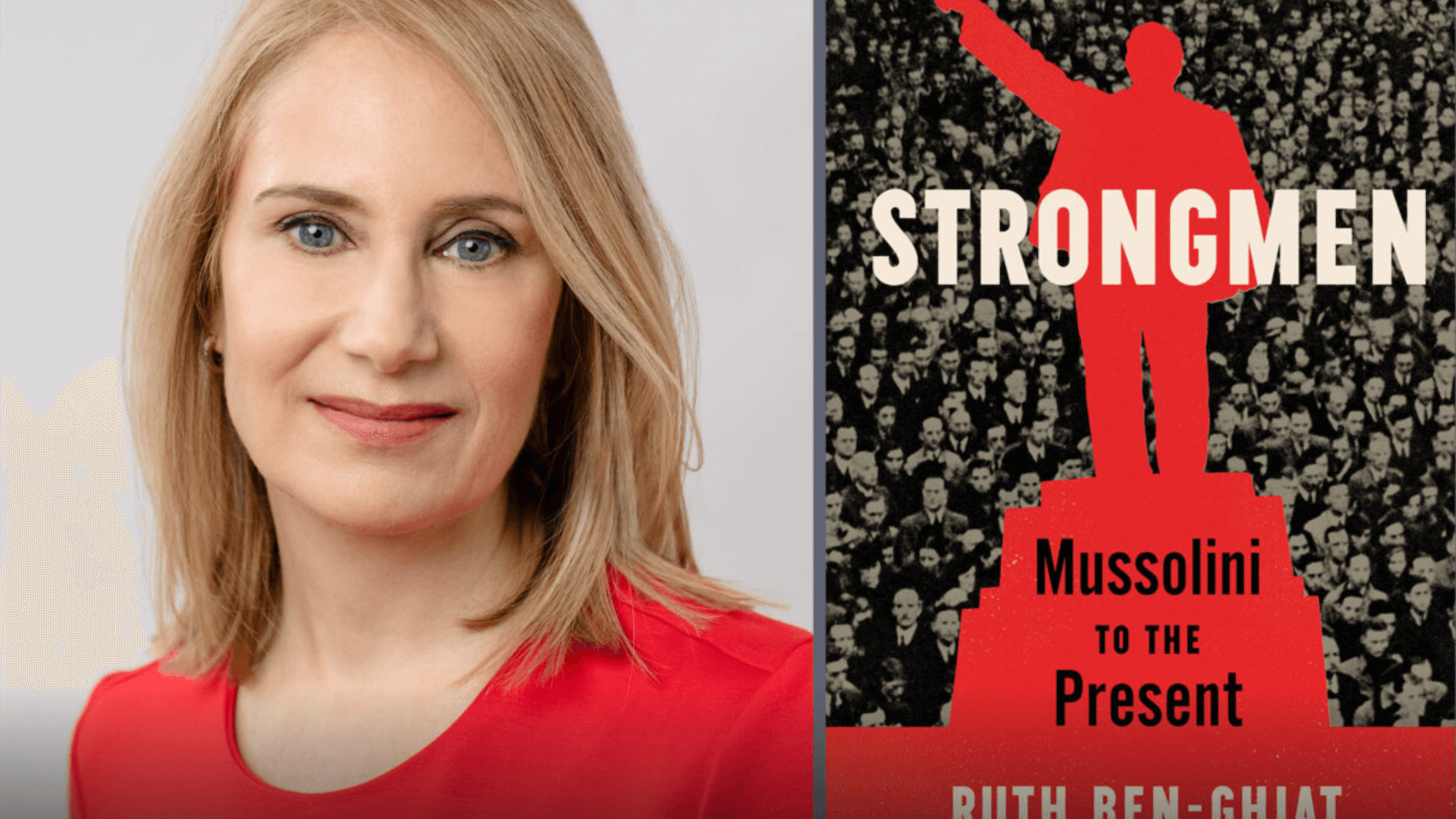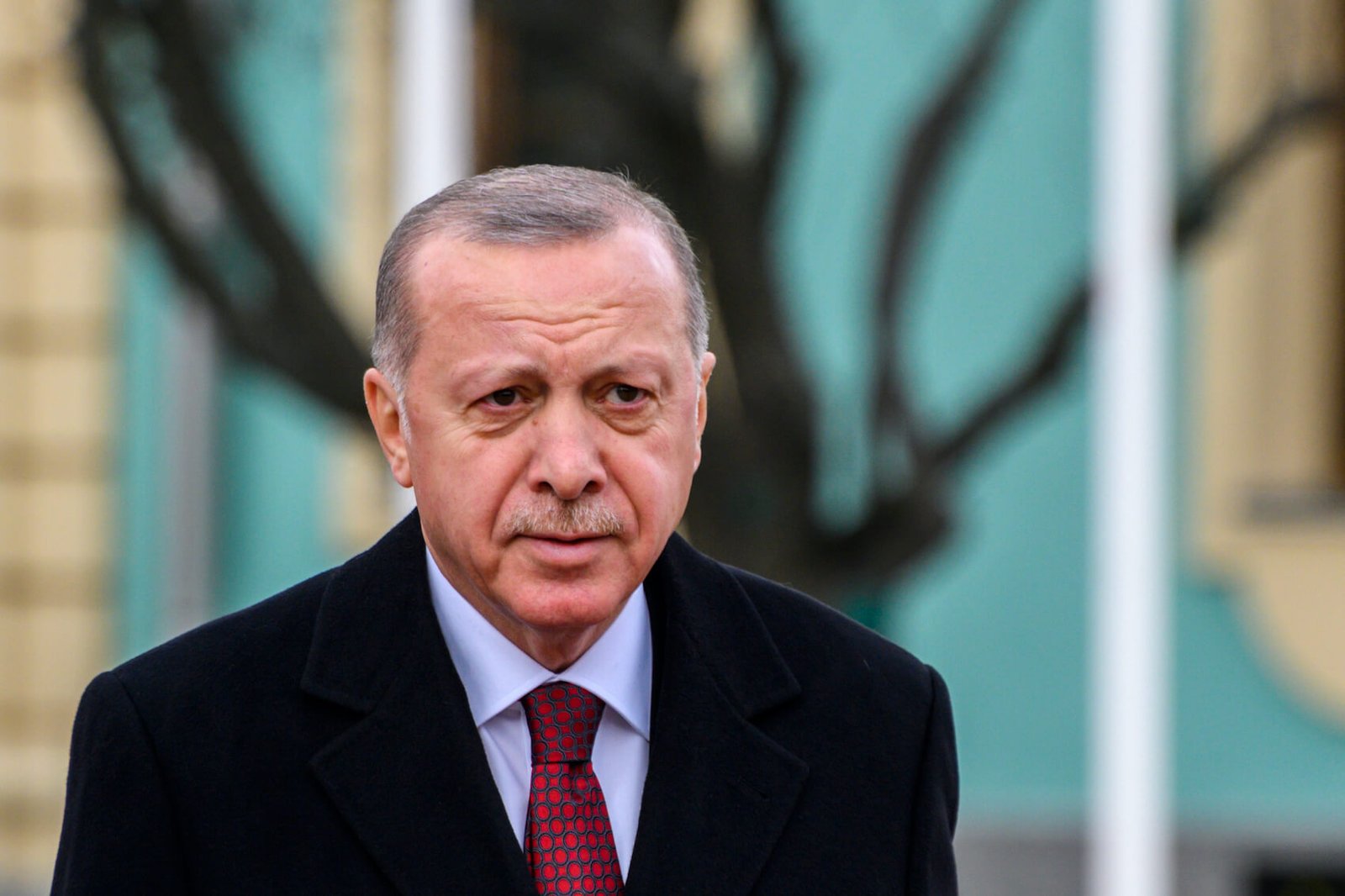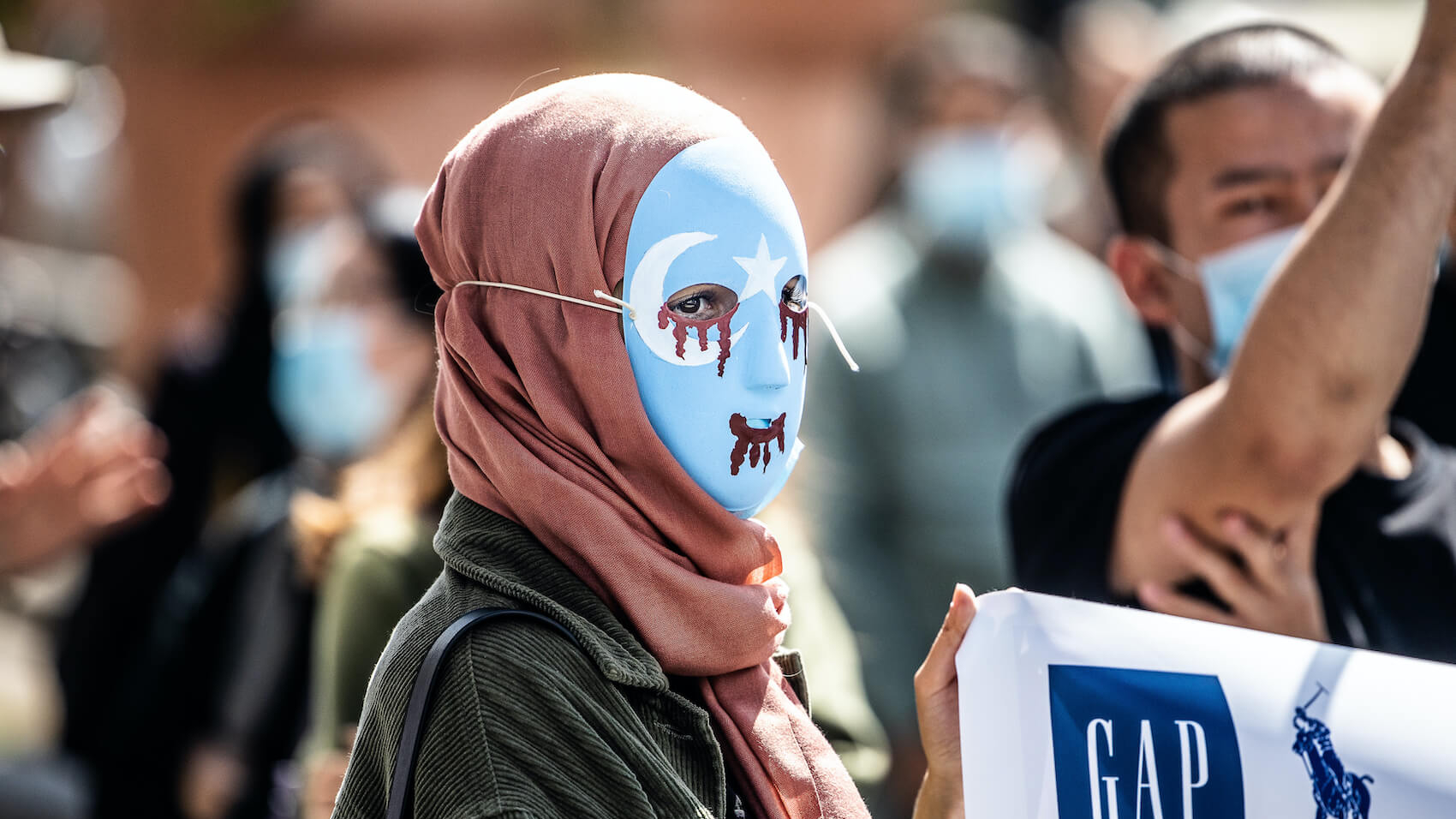Ozturk, Ibrahim. (2021). “Populist attacks on institutions as a reaction to the hyper-globalization.” Populism & Politics. May 21, 2021. European Center for Populism Studies (ECPS). https://doi.org/10.55271/pp0003
This article explores the discrediting and decommissioning of the institutional foundations of the economy by populist leaders and its impact on economic performance in major emerging market economies (EMEs). One situation that justified these attacks that also attracts public support in recent years is argued to be the devastating effects of the global economic and financial crisis on developing countries (DCs) in general.
By Ibrahim Ozturk
During the heyday of globalization, since the 1980s, the major emerging market economies (EMEs) not only increased their share of the global gross domestic product (GDP) in terms of purchasing power parity (PPP) but also achieved a remarkable “convergence” (Lee, 2018; Lee, 2013) in terms of per capita GDP to that of the average developed country. Their share increased steadily from 36 percent in 1980 to 58 percent in 2016 (OECD, 2018). However, recent challenges like the Covid-19 pandemic and economic crisis have eroded optimism for the continued convergence.
Around the world, economic problems are attributed to the excesses of globalization. In a crisis like the Covid-19 pandemic or the 2008 economic crash, citizens of nation states might view their plight as being like a small boat sailing through a rough storm; whatever measures they take on the boat will not save them. These perceptions have helped various populist parties ascend to power or become coalition partners all over the world in the recent years. Although different economic, political, cultural, and security concerns shape populism across the right-left political spectrum, in this article, we will explore populism in selected EMEs without making a right-left distinction. We’ll look at the BRICS (Brazil, Russia, India, China, South Africa) countries and the MINTA (Mexico, Indonesia, Nigeria, Turkey, Argentina) countries, all known as both middle income and populist countries—and all candidates to fall into the “middle income trap” (Kyle & Gultchin, 2018). As the main argument of this article, our sample set shows that populism and institutional erosion coexist, with the former causing the second.
After summarizing the major repercussions of hyper globalization on developing countries (DCs) and looking at the domestic political reaction to this process, the third section will focus on the attacks made by populists on institutions, including the visible erosion of governance indicators in the sample country groups. The last part summarizes the main conclusions.
Impact of Globalism on National Economies
The failure of DCs to manage the challenges posed by the rising “multiplex world,” a term recently coined by Acharya (2017), prepared the ground for populism and allowed populist parties to make electoral gains not only in DCs but also in several developed ones. As Rodrik (2018) puts it, to the extent that radical globalization works against ordinary households at the micro-level and violates the independence, autonomy, and sovereignty of nation-states at the macro-level, it fosters feelings against openness, globalization, and also large regional agreements. However, objective and speculative factors in the rising objections should be adequately addressed.
First, as the Great Recession of 2008-2010 showed, because of their weak institutional governance, democratic check and balances, and excessive dependence on external markets, (particularly in finance), DCs cannot isolate themselves from the contagious effects of an erratic crisis in major capitalist countries. In addition to the ongoing harsh global competition, the economic recession of 2008 and subsequent fiscal crises have led to mass unemployment and distorted income distribution; together, they increased the perception of economic insecurity in DCs.
Second, there are also perceptions that large companies or international organizations use free trade and unconstrained financial and fiscal agreements to constrain national governments in legislating socially desirable policies against their perceived interests. For instance, austerity programs implemented after 2008 worked against the most fragile segments of society, those living on a low and fixed income.
Third, new technological shifts of the fourth industrial revolution like automation, robotics, artificial intelligence, cyberspace, big-data, and cloud technology have created downward pressure on the wages of low-skilled workers in non-export and import-competing industries. Capital mobility, which allows businesses and entrepreneurs to move to different countries where factor prices are lower and income and corporate tax are more competitive, creates downward pressure on the wage level of the less skilled labour force and kills local employment capacity. Overall, under excessive globalization and turbulences, income distribution skews in favour of large company owners and highly skilled workers, mainly in the export industries (Li, Hou, & Wu, 2017; WEF, 2017).
Fourth, given these factors, governments in DCs face the challenge of managing the distribution of the cost and benefits of national growth through an appropriate mix of taxes, safety nets, and subsidized public delivery of social services (health, education, low-cost housing) (Gill & Krahas, 2015). For instance, by considering the adverse impact of the pandemic on the poorest segment of society, which could trigger social unrest, the IMF, as the lender of last resort, called on governments to close the income gap between the richest and poorest by taxing wealthy businesspeople and spending more on the poor (The Guardian, April 1, 2021). However, contrary to those expectations, as Krugman (2008) has noted, neither governments nor the “winners” (i.e., entrepreneurs, companies) from free trade compensate the “losers.” The worst is that, as mentioned before, capital mobility or the fear for the so-called “capital flight” would undermine the existing premature efforts for the taxation of wealthy business globally to close existing income gap (Piketty, 2018; Piketty & Goldhammer, 2014). Rather the contrary, as recent experiences under pandemic have shown, the super-rich increased their wealth in many developed and developing countries (Financial Time, May 14, 2021), whereas the most vulnerable segments of the society have received quite unequal and inadequate support. This is because, on the one hand, the capital has various lobbying opportunities to soak up Covid cash; on the other hand, the businessman is “stateless” and therefore triggers the fear of abandoning the country because of more favourable tax privileges and financial supports elsewhere.
DCs have limited capacity to take advantage of the favourable global economic conjuncture and give back their gains before they are consolidated during the crisis. Additionally, they are exposed to the new problems mentioned above. While significant aspects of the negative repercussions are attributable to uncontrolled globalization, national governments are not entirely exempt from responsibility. As a result, the failure of DCs to properly manage globalization causes massive alienation and feelings of abandonment amongst the “silent majority,” preparing the ground for the exaggeration, falsification, and exploitation of problems and, therefore, manipulation of the electorate by populist politicians.
Populism as an Internal Reaction
As Luiz (2016) puts it, intensifying tension between the insiders or winners (the status quo) and the outsiders or losers of globalization determines the course of populism. Mudde (2004, 2007, 2013) and Müller (2016) underline the anti-elitist and anti-globalization characteristics of populist rhetoric. Some authors like Mouffe (2018) and Kaltwasser (2019) interpret populism as a reformist opportunity for democratic correction against the status quo and elites, and therefore, they present it as a member of the democratic club (Canovan, 2005).
Mouffe supports populism because of its potential contribution to “radical democracy” through the mobilization of excluded sectors of society against the status quo. Following the same line of analysis, Jansen (2011, 82) contends that “a political project is populist when it is a sustained, large-scale project that mobilizes ordinary, marginalized social sectors into publicly visible and contentious political action, while articulating an anti-elite, nationalistic message that valorises ordinary people. It is therefore difficult to imagine democratic politics without populism. The dominance of a predominantly anti-populist logic may reduce politics to an administrative enterprise with over-proportionate input from colleges of experts and technocrats.”
By looking at empirical data, it is necessary to question the ultimate goals of populists and to analyse where populist policies will go, regardless of their intentions, because of the “built-in mechanisms” they contain. Populism should be judged by its attitude when it consolidates its power and to changes through free and fair elections, rather than its idealistic and romanticized rhetoric before it comes to power and its actions during its initial years of inexperience (Lewis et al., 2019).
Rosanvallon (2006) argues that populism might take the form of a political expression in which the democratic project allows itself to be eliminated by a non-democratic ideology. With its orientation to make democracy less pluralistic (in political rights) and more inclusive (in the realm of social rights), contemporary populism is a fusion of nationalism (with its notion of the unified people) and authoritarianism (with its lack of tolerance for any alternative discourses). This suggests that populism is not just anti-elitist; it is anti-pluralist—and herein lies its profoundly undemocratic character (Weyland, 2020; Mueller, 2015).
To sum up Norris and Inglehart’s (2019: 445) words, populism is an authoritarian philosophy and style of governance, in which “legitimacy flows from popular sovereignty and vox-populi, superseding minority rights, constitutional checks-and-balances, and decision-making by elected representatives.” Moreover, populists’ “divide and rule” strategy scapegoats marginalized groups, which serves to consolidate the leader’s power, to distract public attention from his failures, or to conceal from the people the nature of his rule or the real causes of economic or social problems (Munro, 2021). In the context of this paper, populism is accompanied with stereotyping and stigmatizing “enemies of the nation”—other nations, international organizations, capitalists, or minorities.
What are the effects of populism on economic development?
The ultimate task in economic development is to achieve an inclusive, productivity-oriented and sustainable growth. Other main objectives include the generation of satisfactory income through employment creation and the prevention of erosion in the overall wage level without sacrificing macroeconomic stability. The question to ask here is, What are the available ideological and economic policy tools at the disposal of populists to manage external conditions and the resulting domestic imbalances properly? What is the capacity of populist governments to ensure sustainable, inclusive, and productive growth vis-a-vis hyper globalization?
Rodrik (2017, 2018) defines economic populism as “anti-establishment orientation, a claim to speak for the people against the elites, opposition to liberal economics and globalization (anti-foreign capital and companies), and often (but not always) an affinity for authoritarian governance.” With a similar approach, several economists who are also interested in economic populism (see Houle & Kenny, 2018; Dornbusch & Edwards, 1991; Kaufman & Stallings, 1991; Sachs, 1989) describe it as an “irresponsible approach” through redistribution of wealth and government spending. One critical issue is the pressure of “short-termism,” which is efforts by populists to meet short-term expectations they create. It is incompatible with the needed time dimension of structural reforms, which are costly initially but fruitful in the long run. The economic policy populists tend to follow is characterized by an initial period of massive spending financed by foreign debt and followed by a second period marked by hyperinflation and the implementation of harsh economic adjustments.
Moreover, quite understandably, populist leaders focus on redistribution policies to improve the living standards of the so-called “silent and pure majority” against the “comprador bourgeoisie” or “corrupt elite.” However, as Pareto-optimality implies, when there are no effective external and domestic compensation mechanisms to make one better off without making someone else worse-off, populism relies on different bargaining strategies, sometimes even coercive policies, via highly politicized resource transfers across social classes. As will be discussed below, the excessive short-termism of populists also ignores inter-generational accounting principles and does not allow circumstances for the needed consensus and reform coalitions that increase productivity through technological transformation and upgrading human capital—and therefore achieving high-quality growth.
Taken together, populism has problems with the principles of good governance, such as pluralism, participation, accountability, and transparency for market-based economic development.

Populism, the Market, and Institutions
In the context of hyper globalization, the motivation of populists to discredit institutions reflects a lopsided view—that these institutions serve the elites, oligarchs, and international interests rather than the citizens. However, this approach does not fully capture the meaning, existence, evolution, and the role of institutions in economic development. As Polanyi (1944), North and Thomas (1973), and North (1997) showed quite succinctly, there is no development without robust institutional design defining the rules of the game. Markets are not God-given, but they are “designed” with the help of institutions.
As North (1990: 3) contends, “institutions are the rules of the game in a society or, more formally, are the humanly devised constraints that shape human interaction. In consequence, they structure incentives in human exchange, whether political, social, or economic.” More recently, Rodrik et al. (2004), Acemoglu et al. (2005), and Acemoglu and Robinson (2012) showed that societies with more flaws tend to have much “worse economic institutions” than those that don’t. This takes us to the role of politics in the design of institutors. As Dore (1986) showed in Japan’s economic development, and more recently, as Wen (2016) proposes quite assertively for the Chinese economic transition, “market creation” needs political coordination and capacity to set proper priorities and reach a workable compromise among the major stakeholders.
To start with, by denying institutional check and balances (i.e., the separation of the legislature, executive, and judiciary) and the autonomy of several key institutions such as the central bank, statistical institutes, court of auditors, and competition board, in the name of sovereignty and people’s self-determination via elections, populists take a strong anti-institutional stance. This stems from their belief that unelected national or supranational institutions serve the interests of the corrupt elite, global companies, and developed countries at the expense of the pure people. Reflecting the same position, populists also oppose the oversight of international anchors over their governance. They go further and also discredit science and scientific evidence/findings as untrustful and declare “folk wisdom” as more valuable.
Such denials of science, professionalism, expertise, and institutions means that populists underestimate the importance of contemporary governance, which strives to bring solutions to conflicts of interest through different institutional designs and innovations that can alleviate problems of collective action and participation. Given the fact that political parties lose importance and elections serve the leader’s authority when populists are in charge, populist opposition to the autonomous institutions in favour of popular sovereignty cannot be easily interpreted as an indication of a “democratic corrective” or a process of “creative destruction” for better outcomes (Peruzzotti, 2017; Edwards, 2010).
However, autonomous institutions, based on professionalism, expertise, and division of labour, play a crucial role in fulfilling citizens’ collective demands through pre-determined and agreed-upon rules and delegation mechanisms such as free and fair elections (Bezes & Le Lidec, 2016). Several uncertainties that come with the weakening of autonomous institutions, and reliance upon ad-hoc rules, arbitrariness, and irregularity, include the lack of predictability and short-sighted decision-making which result in lower investment, misallocation of resources, and finally, lower growth (Acemoglu et al., 2013; Helpman, 2008; Kartik & Sideras, 2006; Rodrik, 2000 & 2012; Yıldırım & Gökalp, 2016).
A striking example of this is the attempt to limit central bank autonomy, which, most of the time, results in the loss of price stability as politicians run expansionary macroeconomic policies to fuel short-term growth at the expense of fiscal and monetary discipline (Edwards, S. 2010; Learner, 2019). The suggestion is that the autonomous but accountable and transparent institutions have the most credibility within modern governments—and therefore, governments should avoid interventions in fundamental institutions, such as the judiciary or Central Bank as well data monitoring agencies, like public statistical institutions that are empowered to produce scientific, impartial, and reliable data.
Table 1 shows how authoritarian populist governments undermine the quality of institutions. It summarizes the broader categories of governance (composed of political participation, rule of law (ROL), stability of democratic institutions, political and social integration, socioeconomic development, monetary and fiscal stability, private property, welfare regime, economic performance, and sustainability) in BRICS and MINTA country groups. Numbers in red highlight an alarming situation and underline an obvious institutional erosion in all these countries, but particularly in Russia, Nigeria, Turkey, and China.

Considering the high level of arbitrariness and one-man rule in populist governments, rule of law evolves as the most crucial parameter for institutional robustness. Therefore, the ROL criteria given in Table 1 is supported by a further sub-set of measures in Table 2. The World Justice Project (WJP)’s ROL index in 126 countries consists of the following aspects: constraints on government powers, absence of corruption, open government, fundamental rights, order and security, regulatory enforcement, civil justice, and criminal justice. This index shows similar results for upper middle-income countries (UMI) as of 2020. There is no single country over $12,535 per-capita GDP with an average WJP score below 0,50. UMI countries exhibit dramatically lower score in the ROL index and appear to be the most probable candidates to remain stuck in the middle-income trap.

Conclusion
Populism signifies a significant deviation from institutionalized governance due to its reliance on a leadership cult of the strong man. Populism has developed partly as a reactionary movement to undisciplined globalization and the destructive impacts this has had on national and local economies. Globalization transmits its adverse impacts onto national economies through several linked threads such as trade diversion, unfair import and superior export competition, erosion of employment and income, distortionary patents, and financial instabilities. Additionally, there are perceptions that also foster the rise of populism—specifically that local bourgeois or “self-serving, corrupt elites” have successfully aligned their interests with global capitalism at the expense of the most vulnerable segments of society. For instance, constraints such as austerity or belt-tightening programs caused by the global economic crisis prevented governments from supporting the most fragile members of society. On the contrary, big companies were given priority and were rescued during the crisis, because they were “too big to fail.” Poorer segments of society felt abandoned and alienated. The result has been the rise of chronic income inequality (Pastor & Veronesi, 2020).
Populists instrumentalize these external impacts and domestic reactions to legitimize their distrust in supranational institutions, which urge national governments to further checks and balances and reforms and strengthen local autonomous institutions. Populists also fear that elites can capture autonomous institutions and therefore discredit their role in economic development.
However, this road leads to low productivity and slow and unstable growth. The divisive rhetoric populists use to seize power causes deep fragmentations across societal fault lines and prevents the formation of national coalitions, which are needed to upgrade the economy through collective action and participation as well as sometimes painful and complicated reforms. Relatedly, the incompatible time dimension in unstable societies also makes politicians highly oriented toward short-term fixes; therefore, long-term structural reforms, with high ex-ante cost but ex-post return, are ignored.
In the absence of institutional checks and balances and reforms and efficiency pursuits, populists give priority to high growth and income redistribution through highly politicized resource transfers. Ignorant of economic efficiency criteria and high growth through expansionary monetary and fiscal policies, populist governments end up with unstable prices, domestic as well as external deficit, and permanent fiscal and financial crises such as currency shocks.
Populists come to power by exploiting global and national grievances and also offer various favours to voters; the process results in worse economic outcomes, which pushes populist leaders to employ even more “divisive” rhetoric and policies through creating “enemies” both inside and outside the country in an effort to hide their incompetence and legitimize their governance. These findings should negate the optimistic view of populism as a democratic corrective against the status quo. The recent assault of populist regimes on democracy and the market economy shows that they are increasingly distancing themselves from democracy and the market economy to become even more authoritarian.
References
— (2005). “Trade-adjustment costs in OECD Labor Markets: A mountain or a molehill?” in OECD Employment Outlook. Paris: OECD Publications.
— (2015). The participation of developing countries in global value chains: Implications for trade and trade-related policies. OECD. Paris: OECD Pub.
— (2016). “The future of jobs, employment, skills and workforce: Strategy for the Fourth Industrial Revolution.” WEF.Geneve.
— (2017). “System initiative on shaping the future of production: Impact of the Fourth Industrial Revolution on supply chains.” WEF. Geneve.
— (2018). Perspectives on global development-2019. OECD. Paris: OECD Publishing http://dx.doi.org/10.1787/5js33lfw0xxn-en.
— (2020). Transformation Index. BTI. https://www.bti-project.org/en/home.html?&cb=00000 (accessed on May 16, 2021).
Acemoglu, D., Egerov, G., & Sonin, K. (2013). A political theory of populism. The Quarterly Journal of Economics. 128(2), 771-805.
Acemoglu, D., Johnson, S. & Robinson, J. (2005). Institutions as the fundamental causes of long-run growth. In P. Aghion and S. Durlauf (Eds.). Handbook of Economic Growth. Oxford: Elsevier Books.
Acemoglu, D. & Robinson, J. (2012). Why nations fail: The origins of power, prosperity, and poverty, New York: Crown Publishers.
Acharya, A. (2017). Global governance in a multiplex world. Robert Schuman Centre for Advanced Studies (RSCAS), 29, Global Governance Programme-266.
Bezes, P. & Le Lidec, P. (2016). The politics of organization. The new divisions of labor in state bureaucracies. Revue française de science politique, 3(3-4), 407-433. https://doi.org/10.3917/rfsp.663.0407
Canovan, M. (2005). The People. Cambridge: Polity Press.
Dore, R. (1986). Flexible Rigidities: Industrial policy and structural adjustment in the Japanese Economy, 1970-1980. London: The Bloomsbury Academic Collections Series.
Dornbusch, R. & Edwards, S., (Eds.). (1991). The Macroeconomics of populism in Latin America. Chicago: Chicago University Press.
Edward, C. (2010). Bureaucrats and expertise: Elucidating a problematic relationship in three tableaux and six jurisdictions, Journals of Open Edition. (52,2), 255-273. https://doi.org/10.4000/sdt.13902
Edwards, S. (2010). Left Behind. Latin America and the false promise of populism. Chicago: University of Chicago Press.
Gill, I. S. and Kharas, H. (2015). The middle-income trap turns ten, Working Paper Series (WPS7403). Washington D.C.:World Bank.
Grabka, Markus M. (2015). Income and wealth inequality after the financial crisis: The case of Germany, Empirica, Springer Verlag, Berlin, 42(2), pp. 371-390, http://dx.doi.org/10.1007/s10663-015-9280-8
Helpman, E. (2008). Institutions and economic performance. Cambridge, Mass: Harvard University Press.
Houle, C., & Kenny, P. (2018). The political and economic consequences of populist rule in Latin America. Government and Opposition, 53(2), 256-287. DOI:10.1017/gov.2016.25.
Jansen, S. R. 2011. Populist Mobilisation: A New Theoretical Approach to Populism, Sociological The ory 29 (2): 75-96.
Johnson, C. A. (1982). MITI and the Japanese miracle: The growth of industrial policy, 1925–1975. Stanford, CA: Stanford University Press.
Kaltwasser, C. R. (2019). Populism and the economy: An ambivalent relationship. International Policy Analysis: Friedrich Ebert Stiftung.
Kartik, R. & Sideras, J. (Eds.). (2006). Institutions, globalization and empowerment. Northampton: Edward Elgar Publishing.
Kaufman, R. R. & Stallings, B. (1991). The political economy of Latin American populism. In The macroeconomics of populism in Latin America (pp. 15–43). Chicago: University of Chicago Press.
Krugman, P. (2008). Trade and wages reconsidered. Brookings Papers on Economic Activity. 2, 103–37.
Kyle J. & Gultchin, L. (2018). Populists in power around the world. Tony Blair Institute for Global Change. Retrieved from http://institute.global/insight/ renewing-centre/populists-power-around-world (accessed on May 16, 2021).
Learner, Heidi. (2019). “The economic impact of populism” Savills. https://www.savills.com/impacts/market-trends/the-economic-impact-of-populism.html (accessed on May 17, 2021).
Lee, J.W. (2018). “Convergence success and the middle-income trap.” EBRD Working Paper. No. 211. http://dx.doi.org/10.2139/ssrn.3162012.
Lee, K. (2013). Schumpeterian analysis of economic catch-up. Knowledge, path-creation, and the middle-income trap. Cambridge: Cambridge University Press.
Lewis, P. et al. (2019). “Revealed: the rise of populist rhetoric.” The Guardian. March 6, 2019. https://www.theguardian.com/world/ng-interactive/2019/mar/06/revealed-the-rise-and-rise-of-populist-rhetoric (accessed on May 18, 2021).
Li, G., Hou, Y. & Wu, A. (2017). “Fourth Industrial Revolution: Technological drivers impacts and coping methods.”Chinese Geographical Science. 27(4): 626–637. doi: 10.1007/s11769-017-0890-x
Luiz, J.M. (2016). “The political economy of middle‐income traps: Is south Africa in a long‐run growth trap? The path to “bounded populism.” South African Journal of Economics. 84, 3-19. https://doi.org/10.1111/saje.12117
Mouffe, C. (2018). For a left populism. London: Verso.
Mudde, C. (2004). “The populist zeitgeist”. Government and Opposition. 39(4), 541-563.
Mudde, C. (2007). Populist radical right parties. Cambridge: Cambridge University Press.
Mudde, C. (2013). “Three decades of populist radical right parties in Western Europe: So What?” European Journal of Political Research. 52(1), 1-19.
Munro, A. (2021). “Populism.” Encyclopedia Britannica. https://www.britannica.com/topic/populism (accessed on February 22, 2021).
Müller, J. (2016). What is populism? Philadelphia: University of Pennsylvania Press.
Norris, P. & Inglehart, R. (2019). Cultural backlash: Trump, Brexit, and authoritarian populism. Cambridge, New York: Cambridge University Press.
North, D. (1990). Institutions, Institutional Change and Economic Performance (Political Economy of Institutions and Decisions). Cambridge: Cambridge University Press. doi:10.1017/CBO9780511808678
North, D. C. (1997). The contribution of the new institutional economics to an understanding of the transition problem.WIDER Annual Lectures. March 1, 1997. World Institute for Development Economics Research (WIDER), Helsinki. https://www.wider.unu.edu/publication/contribution-new-institutional-economics-understanding-transition-problem-0 (accessed on May 18, 2021).
North, D. & Thomas, R. (1973). The rise of the western world. Cambridge: Cambridge Univ. Press.
Olson, M. (1982). The rise and decline of nations. New Haven, CT: Yale University Press.
Pastor, L. & Veronesi, P. (2020). “Inequality aversion, populism, and the backlash against globalization.” Chicago Booth Research Paper. 20-11. http://dx.doi.org/10.2139/ssrn.3224232
Peruzzotti, E. (2017). “Populism as democratization’s nemesis: The politics of regime hybridization. Chinese Political Science Review. 2, 314–327. https://doi.org/10.1007/s41111-017-0070-2
Piketty, T. (2018). “Brahmin left vs. merchant right: Rising inequality and the changing structure of political conflict-Evidence from France, Britain and the US, 1948-2017.” WID. World Working Paper Series. No. 2018/7.
Piketty, T. & Goldhammer, A. (2014). Capital in the Twenty-First Century. Boston: Harvard University Press.
Polanyi, K. (1944). The great transformation. Boston: MA Beacon Press.
Rodrik, D. (2000). “Institutions for high-quality growth: What they are and how to acquire them.” Studies in Comparative International Development. 35(3), 3-31.
Rodrik, R., Subramanian, A. and Trebbi, F. (2004). “Institutions Rule: The Primacy of Institutions over Geography and Integration in Economic Development.” Journal of Economic Growth. June 2004, Vol. 9, No. 2 (June), pp. 131-165 Published by: Springer
Rodrik, D. (2012). The globalization paradox. New York: W. W. Norton.
Rodrik, D. (2017). “Populism and the economics of globalization.” HKS Working Paper. No. RWP17-026.http://dx.doi.org/10.2139/ssrn.2992819
Rodrik, D. (2018). “Is populism necessarily bad economics?” AEA Papers and Proceedings. 108: 196-199.
Rosanvallon, P. (2006). Democracy, past, and future. New York: Columbia University Press.
Sachs, J. (1989). “Social conflicts and populist policies in Latin America.” NBER, WORKING PAPER. 2897. DOI: 10.3386/w2897.
Shi, L.; Li, S. & Fu, X. (2020). “The fourth industrial revolution, technological innovation and firm wages: Firm-level evidence from OECD economies.” Revue d’économie industrielle. 1(1), 89-125. https://doi.org/10.4000/rei.8798
Wen, Y. (2016). The making of an economic superpower: Unlocking China’s secret of rapid industrialization. Singapore: World Scientific Publishing.
Weyland, K. (2020). “Populism’s threat to democracy: Comparative lessons for the United States.” Perspectives on Politics. 18(2), 389-406. DOI:10.1017/S1537592719003955
Yıldırım, A. and Gökalp, M. F. (2016). “Institutions and economic performance: A review on the developing countries.” Procedia Economics and Finance. 38, 347-359. https://doi.org/10.1016/S2212-5671(16)30207-6

























